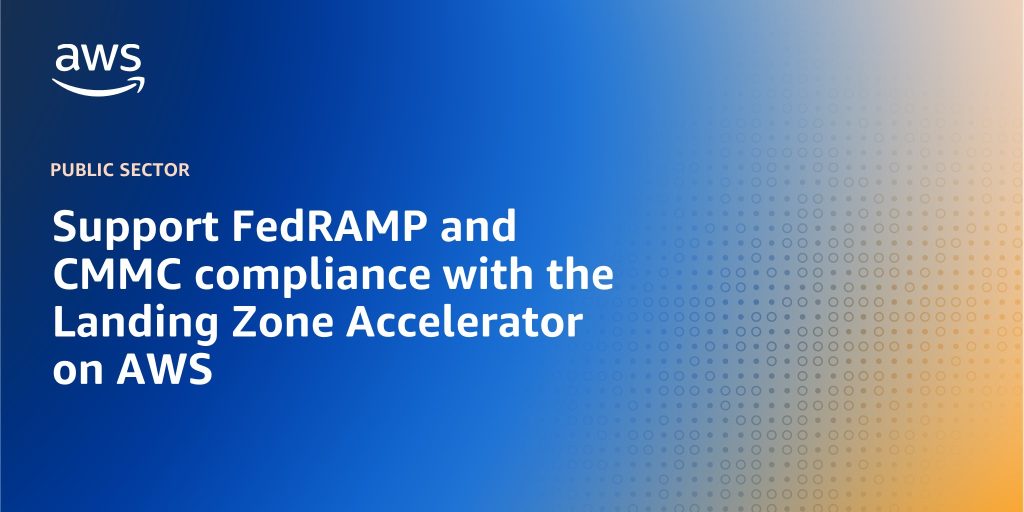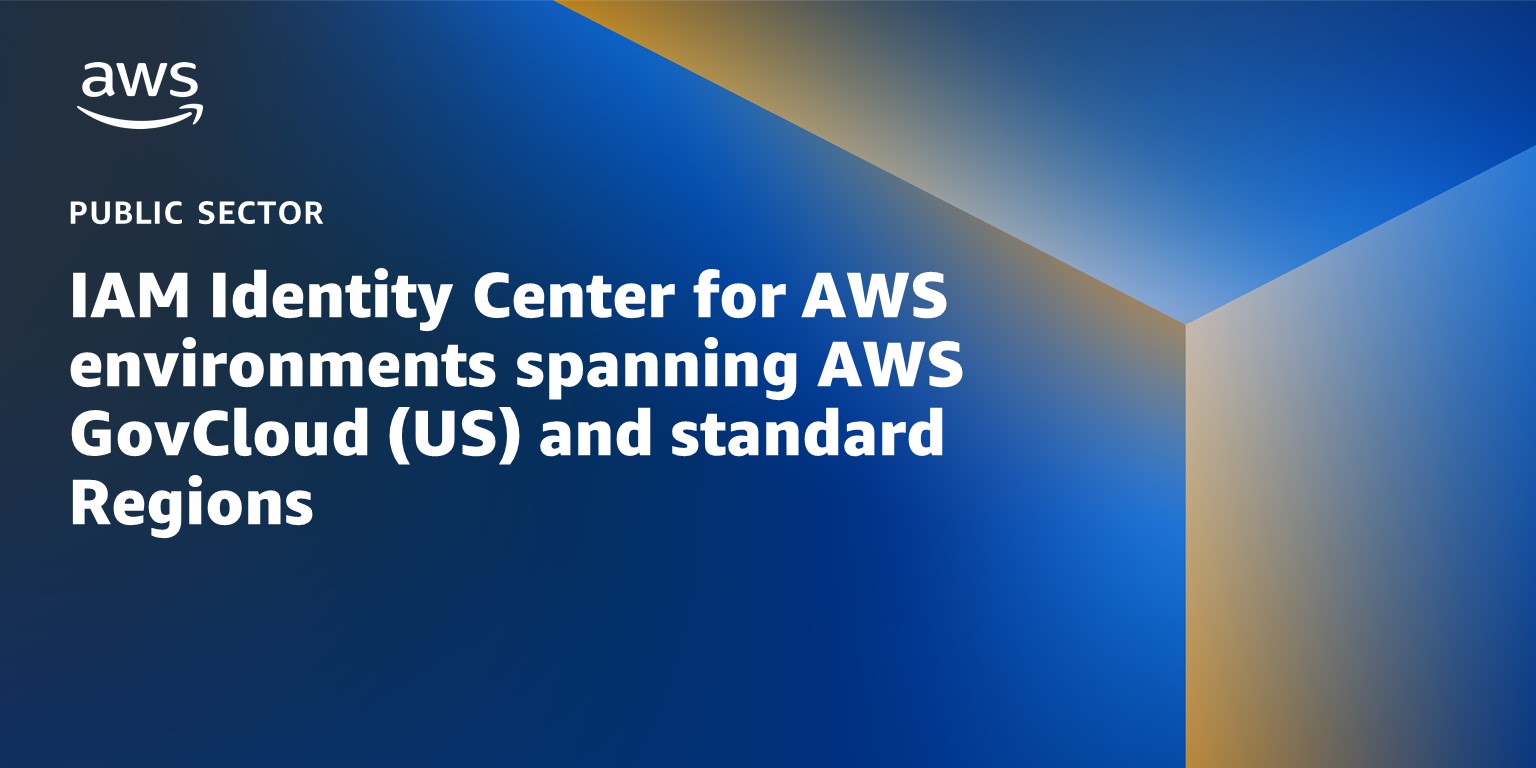AWS Public Sector Blog
Tag: architectural designs
Building high-throughput satellite data downlink architectures with AWS Ground Station WideBand DigIF and Amphinicy Blink SDR
This blog summarizes some of the benefits of cloud-based ground segment architectures, and demonstrates how users can build a proof-of-concept using AWS Ground Station’s capability to transport and deliver Wideband Digital Intermediate Frequency (DigIF) data, along with the software-defined radio Blink, built by the AWS Partner Amphinicy.
Using AWS Verified Access and SD-WAN to streamline and secure remote application access for federal employees
Learn how traditional connectivity methods affect the agency employee experience while accessing applications. Then, discover how AWS Verified Access from AWS and software-defined wide-area network (SD-WAN) can improve the employee experience while accessing enterprise applications while maintaining reliability and security.
Support FedRAMP and CMMC compliance with the Landing Zone Accelerator on AWS
Some US federal agencies and those who collaborate with them must support an automated, secure, and scalable multi-account cloud environment that meets Federal Risk and Authorization Management Program (FedRAMP) and Cybersecurity Maturity Model Certification (CMMC) standards. To support these needs, AWS customers and partners can deploy the Landing Zone Accelerator (LZA) on AWS. Recently, AWS worked with Coalfire, a FedRAMP-approved third-party assessment organization (3PAO) and AWS Partner, to assess and verify the LZA solution.
Extracting, analyzing, and interpreting information from Medicaid forms with AWS
What if paper forms could be processed at the same speed as digital forms? What if their contents could be automatically entered in the same database as the digital forms? Medicaid agencies could analyze data in near real time and drive actionable insights on a single dashboard. By using artificial intelligence (AI) and machine learning (ML) services from AWS, Medicaid agencies can create this streamlined solution. In this walkthrough, learn how to extract, analyze, and interpret relevant information from paper-based Medicaid claims forms.
Announcing the Landing Zone Accelerator for Education to support customers in education and research
AWS announced the availability of Landing Zone Accelerator (LZA) for Education, an industry-specific deployment of the LZA on AWS, designed to further support education customers in designing cloud environments for their compliance needs. The LZA on AWS solution is architected to align with AWS best practices and multiple, global compliance frameworks. The new LZA for Education builds on the LZA to help customers secure their research workloads or workloads containing student data by giving them a set of default configurations that they can use as a starting point and iterate on to define security and compliance posture as code.
Automatically extracting email attachment data to reduce costs and save time for local public health departments
Local public health departments must notify public health agencies, like state health departments or the Centers for Disease Control and Prevention (CDC), of reportable conditions. These departments receive various types of reports of healthcare conditions through email, in addition to more traditional methods such as mail, fax, or phone calls. Local health departments can dramatically reduce the time and costs associated with manually processing email attachments and improve processing efficiency using automation. In this blog post, learn how to create an automated email attachment ingestion, storage, and processing solution powered by artificial intelligence (AI) and machine learning (ML) services from AWS.
IAM Identity Center for AWS environments spanning AWS GovCloud (US) and standard Regions
AWS IAM Identity Center (successor to AWS Single Sign-On) provides administrators with a simple way to manage identity and access (IAM) across numerous AWS accounts. IAM Identity Center is available in the AWS GovCloud (US) Regions, enabling customers to simply manage access to numerous AWS accounts in their AWS GovCloud (US) organizations. In this blog post, learn four different architecture patterns for providing an organization’s AWS users with access to both standard and AWS GovCloud (US) accounts using IAM Identity Center that can help minimize administrative overhead and simplify the user experience.
Supporting 911 centers with non-emergency response solutions: An architecture guidance
AWS is helping the 911 community mitigate the impact of staffing shortages on call wait times by providing 911 centers the means to automate the receipt and resolution of designated non-emergency calls. Learn how the Jefferson County Communications Center Authority is already seeing improvements using an AWS solution, and discover the solution’s components that support 911 centers in handling non-emergency calls at scale.
Implementing third-party firewall appliances in AWS: Comparing two methods
Public sector customers face challenges to accomplish complex missions with limited resources. Many IT teams are tasked with implementing centralized network security via third-party firewall appliances; protecting internet access by allowing secure connections to only approved destinations; and scaling security across many AWS accounts and virtual private clouds (VPCs)—all with reduced management and operational complexity. In this blog post, learn two options for how to manage network security with third-party firewall appliances.
Improving the customer experience for high-traffic public services: An architecture guidance
Improving the customer experience (CX) has emerged as an imperative for government agencies. In this blog post, learn an architecture pattern that public institutions can use to improve CX while building and deploying secure, resilient, and performant web applications that support sudden surges in demand for public services. This architecture pattern addresses the need of an example use case in which an agency must request information from thousands to millions of civilians, who may access a single-page application at similar times, and then sends email notifications to each civilian to confirm their activity.









